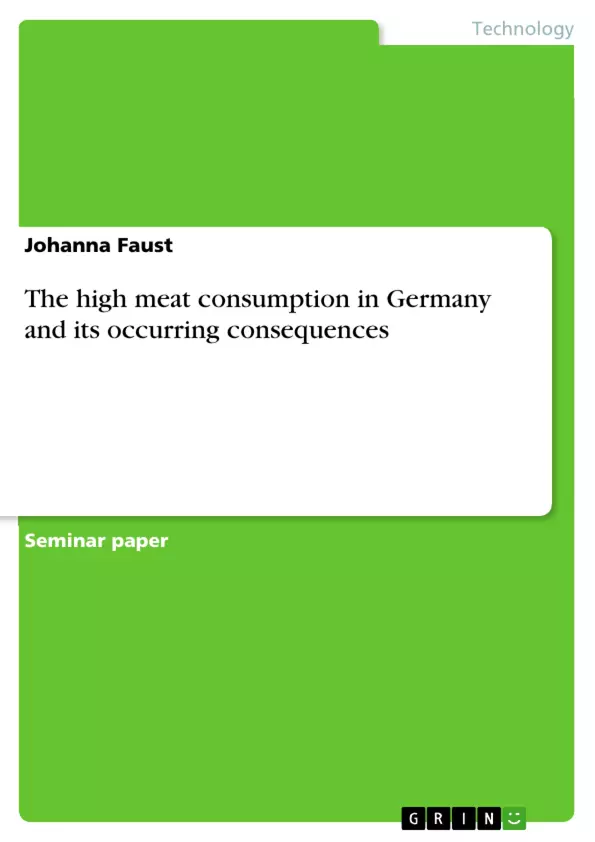This term paper is dealing with the high meat consumption in Germany and its occurring consequences.
Essays and dissertations dealing with meat consumption in Germany have been used as a basic collection of literature. Using neutral literature made it possible to give a broad overview of the topic. Besides one will have a closer look at its development and possible reasons for people to continue eating meat nowadays.
The meat inspection law means 'meat' when talking about fresh or prepared parts of warm-blooded animals, which can be used for human consumption. Despite this containment one has to note that marine animals and other not warm-blooded animals are used for the consumption of meat as well. Still, for the following paper Hellichs and Schroeters definition of meat is enough, because it deals mostly with cattle and horses. On this occasion we deal mostly with meat products, which are produced and used in Germany.
Since the last bovine spongiform encephalopathy crisis, short BSE-crisis, the industry must deal with a scandalous image on meat. Besides, bird flu, foot-and-mouth disease and different scandals with packaging lead to uncertainty within the German consumers. Their trust has been misused and people started to call for environmental friendly and animal friendly meat production.
Today the meat consumption minimally decreases with every year, but the global consumption is still increasing. This causes consequences such as the increase of meat production which causes heavy environmental damages, which are responsible for devastating global impacts. The question, why people still consume that much meat despite they know what impact it has on the environment, arises.
Inhaltsverzeichnis (Table of Contents)
- Introduction
- The development of meat consumption
- Our ancestors, the primitive man, were omnivores.
- Since 16th century the global population grew very fast.
- In the beginning of the 19th century meat consumption was at its lowest point, but it increased again with the starting industrialization and the urbanization.
- Consequences of the high meat consumption.
- Why do people ate and still continue eating meat?
- Summary
Zielsetzung und Themenschwerpunkte (Objectives and Key Themes)
This term paper focuses on high meat consumption in Germany, examining its development and consequences. The paper explores the historical context of meat consumption, particularly in Germany, and analyzes factors that have contributed to its high status. It also addresses the environmental and societal implications of such consumption and considers why people continue to eat meat despite its detrimental effects.
- Historical development of meat consumption in Germany
- Impact of high meat consumption on the environment
- Factors influencing consumer choices regarding meat consumption
- Social and cultural aspects of meat consumption
- Environmental sustainability and ethical considerations related to meat production
Zusammenfassung der Kapitel (Chapter Summaries)
The introduction provides a context for the paper, highlighting the significance of meat consumption in relation to environmental challenges. It discusses the rise of factory farming and its impact on the environment. The chapter also examines the factors contributing to high meat consumption in Germany, focusing on historical trends and the role of industrialization.
The chapter "The development of meat consumption" delves into the historical evolution of meat consumption, exploring its role in different societies and periods. It examines changes in food production, distribution, and consumer habits, tracing the growth of meat consumption from its early stages to its peak in the 20th century.
Schlüsselwörter (Keywords)
Key terms and concepts include: meat consumption, environmental impact, industrialization, factory farming, animal agriculture, consumer behavior, food security, sustainability, ethical considerations, and social and cultural aspects.
- Arbeit zitieren
- Johanna Faust (Autor:in), 2018, The high meat consumption in Germany and its occurring consequences, München, GRIN Verlag, https://www.grin.com/document/453064



